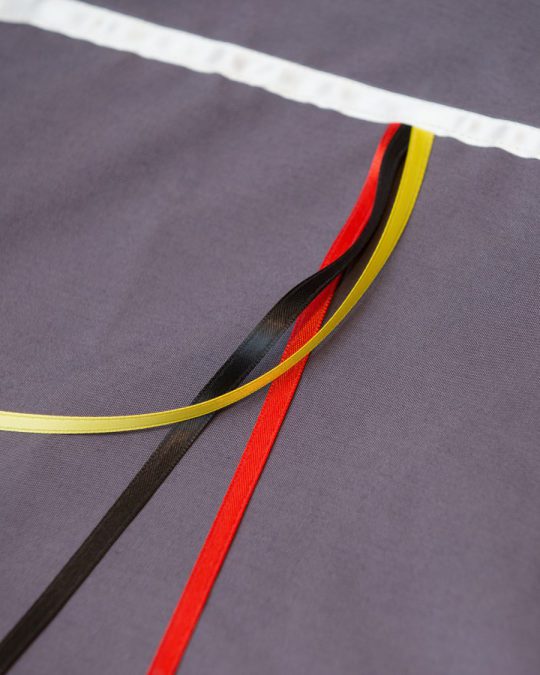
In 1861, approximately 1,400 Potawatomi became U.S. citizens and acquired allotments from the federal government. Every year, Citizen Potawatomi Nation recognizes and celebrates families of those founding members during Family Reunion Festival near Shawnee, Oklahoma. This year’s June 29-July 1 event honors the Anderson, Beaubien, Bertrand, Bourbonnais, Ogee, Pettifer, Toupin, Wano and Yott families.
The event originated as a powwow open to all tribes. However, as non-CPN attendance grew, Tribal member involvement declined.
“We stopped being open and said, you know, ‘We’re doing this for the people, and we’re the people,’ so we closed it and made it a reunion,” explained Margaret Zientek, CPN member and longtime employee of the Tribe.
Zientek recommends arriving early to avoid missing any of the fun and cultural activities, such as hand games and traditional Potawatomi craft classes.
“We try to really weave in the Cultural Heritage Center, the Eagle Aviary, and all of the fun things that are here too, whether that’s the bowling or the mini-putt,” she said.
On Saturday of Festival, honored families take group pictures before General Council. In the past, many honored families used Facebook groups to help coordinate ahead of time. Some create T-shirts to identify each other more easily.
Because of the thousands of people who come each year, Zientek advised finding lodging ahead of time. There are many hotels and motels in the Shawnee area as well as primitive and RV camping at Festival grounds. However, once booking opens, RV spots sell out quickly. Primitive camping is first come, first served, with a limited number of spots equipped with picnic tables and fire pits.
Ready for the powwow
Zientek, a CPN member from the Ogee family, has participated in many traditional dancing competitions and continues to do so. She began making regalia for her daughter, Tesia Zientek, more than a decade ago and has since created regalia for the Potawatomi Leadership Program, honored families and CPN members from across the United States. In fact, Zientek created many of the regalia pieces available at the Citizen Potawatomi Gift Shop.
Growing a regalia collection takes time, and with only a few months to go before this year’s Festival, she encourages those planning to attend to begin making arrangements for their regalia now.
The Cultural Heritage Center frequently hosts Potawatomi regalia-making courses that walk participants step-by-step through the process. For those unable to make it, Zientek shared regalia basics with the Hownikan.
History and traditions
After the French revolution, silk ribbon went out of style in Europe. To find a market for the unwanted ribbon, the French began using ribbon to trade with Native Americans. By the beginning of the 19th century, Native people used ribbon and applique techniques to create vibrant patterns. Today, those same vibrant patterns and techniques are at the center of Potawatomi regalia.
Traditional men’s regalia includes wearing a ribbon shirt, pants and moccasins. Women wear a shawl, blouse, skirt and moccasins.
Two styles of women’s traditional Southern-cloth dancing regalia are the applique and the cotton broadcloth. Some women will choose to wear jingle dresses. However, jingle-dress dancing is a gift few receive, and because of this, most women wear and dance Southern cloth.
Zientek does not use a pattern for making regalia, but does refer to George Winter’s artwork of Potawatomi people from the 1800s to help in the design process. Winter followed the Potawatomi during their forced removal from Indiana to Kansas documenting the 660-mile-long trek west with sketches and paintings.
Sewing it up
When deciding what colors of ribbon and fabric to use, people sometimes base them upon family colors or birth order, but ultimately, she said it is each person’s decision on what works best for them.
To get started creating traditional, women’s Southern-cloth regalia, Zientek generally uses two yards of gabardine and two-and-a-half yards of fringe for the shawl, at least two yards of satin, preferably bridal, adhesive such as Wonder-Under and additional colors of satin for the applique.
She recommends using ribbon that is 5/8-inch to 1/2-inch wide and limiting ribbon colors to four. She explained narrow ribbon is much more difficult to sew than wider ribbon.
For creating men’s ribbon shirts, Zientek often uses an existing shirt that fits the individual to help create a pattern. She also encourages men to wear pants made of lighter-weight material that breathes better than blue jeans in the Oklahoma heat.
Citizen Potawatomi Gift Shop carries many supplies needed to make regalia. Zientek also recommended a variety of online vendors like onlinefabricstore.net and crazycrow.com. For directions on creating Potawatomi, single-cloth pucker-toe moccasins, visit cpn.news/puckertoe. For step-by-step directions for creating a fan, visit cpn.news/fan.
If regalia isn’t on-hand, it is fairly easy to find appropriate clothing to wear. For women, that means a long skirt, closed-toe shoes, and a matching top. For men, slacks, closed-toe shoes and a shirt are acceptable.
Inappropriate attire includes flip-flops and shorts. Pets are also prohibited. The arena is sacred, and because of this, it is important to show respect by wearing modest clothing.
CPN requires all attendees to register in person by Saturday afternoon of festival to gain access to the events and participate in activities.
